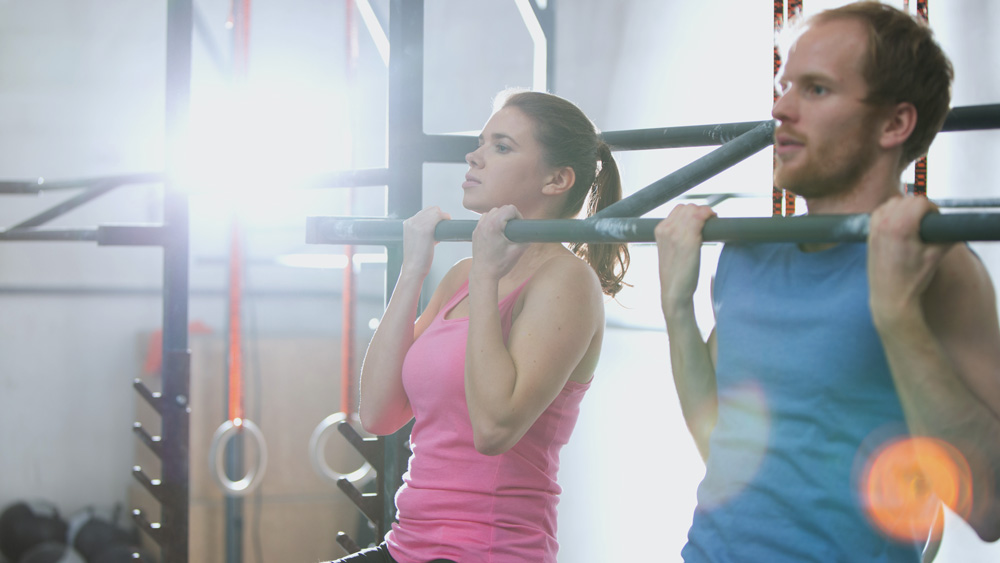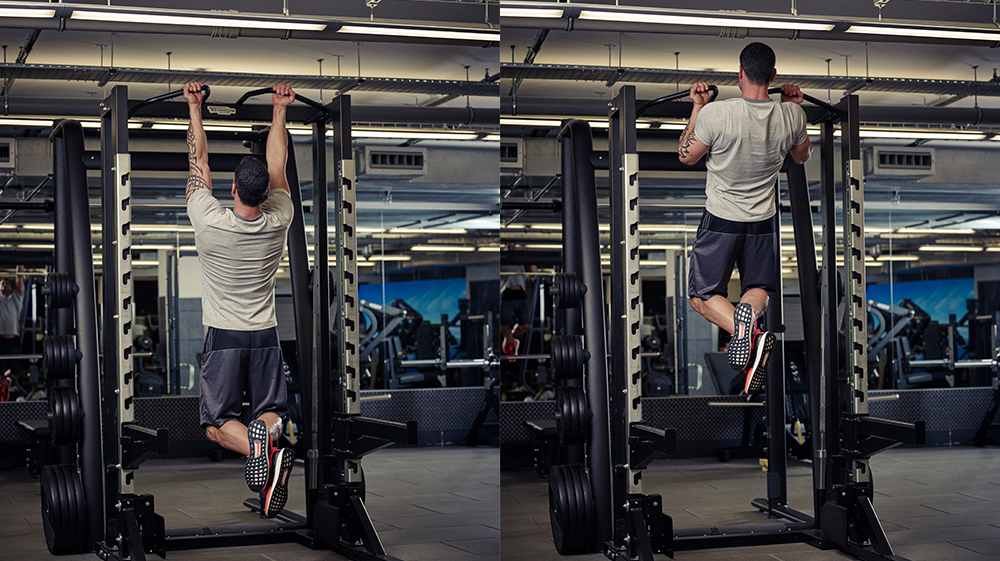How To Do A Chin-Up And Beef Up Your Biceps
Learn well and you’ll build a mighty pair of biceps

If you were to ask every gym-goer what the best biceps exercise is, chances are you would hear varying takes on the dumbbell curl from the vast majority. Granted, the curl has its place and is particularly useful for working on the peak of the muscle. But for adding sheer size to your arms, few moves can better the humble chin-up.
All you need to begin is a pull-up bar and your bodyweight. You’re probably familiar with the pull-up since it forms the cornerstone of most fitness tests alongside the press-up. The chin-up, however, places extra emphasis on the arms.
A traditional pull-up, performed with a wide grip, typically adopts an overhand (pronated) grip, palms facing forward. The primary muscles worked in a pull-up are those in the back, such as the lats and the rhomboids. The pull-up is the natural progression from a standard lat pull-down.
To perform a chin-up, take a closer, underhand (supinated) grip. Those back muscles you recruit so efficiently in the standard pull-up are still activated, but greater stress is now placed on the biceps. The reason for this is elbow flexion – an underhand grip means your bodyweight is channelled through the elbow joint. As the biceps is the primary muscle that attaches to the elbow joint, it bears the load you are lifting.
How To Do A Chin-Up

Grasp a pull-up bar with an underhand grip, hands shoulder-width apart or slightly narrower. Straighten your arms, keep your knees bent and cross your lower legs. Retract your shoulder blades to reduce the stress on the shoulder joints. Keeping your body stable and core engaged, pull your body up until your chin becomes aligned with the bar. Pause for one to two seconds at the top, with the biceps under maximum tension. Slowly lower to the start position.
Whatever you do, don’t get in the habit of doing half reps and chasing numbers. Instead of being fixated on numbers, get fixated on form. A proper chin-up means getting your chin over the bar at the top, and then lowering until your arms are straight.
See related
Chin-Up Variations
Neutral / hammer-grip chin-up
Follow the same technique as a standard chin-up, but with neutral grip bars so your palms face each other. This variation works not just the back muscles and the biceps but also the brachialis – the smaller muscle on the outside of the arm. This muscle is often neglected: it may be small, but building it can add thickness and size to your arms.
Sign up for workout ideas, training advice, reviews of the latest gear and more.
Negative / eccentric chin-up
This variation is best for when you are looking to build the strength to perform chin-ups. Stand on a bench, step or box that’s high enough to let you grasp the pull-up bar in the top position. Then lower yourself to the floor, taking three to four seconds to perform this phase of the move. Then get back on the bench and go again.
This is useful for novice lifters looking to perform bodyweight chin-ups, or those who have progressed to weighted variations. The lowering phase helps your body to handle a challenging weight, which benefits your strength in the standard chin-up.
Weighted chin-up
Once your blockbuster biceps are no longer satisfied with merely lifting your bodyweight, you can increase the challenge by adding some weight to the exercise. For added style points, wrap a heavy chain around your shoulders, but if convenience is more important to you than looking like a badass (or there are no chains lying around) then you can slip on a weighted vest, a dip belt attached to weight plates or, in a pinch, hold a dumbbell between crossed ankles.
Assisted chin-up
The chin-up, like the pull-up, is an unforgiving exercise and it can be frustrating to have to tap out after just a couple of reps. If that’s the case you can leave off chin-ups for a while in favour of other exercises that build the strength required to complete a full set – or you can simply loop a resistance band over the bar. Place one or both feet into the band to provide some assistance while you get to grips with the exercise. Start with a heavy band for extra assistance and then progress to a lighter one until you don’t need any help at all.
Band resisted chin-up
With assisted chin-ups the band giveth, but with resisted chin-ups the band taketh away. Instead of attaching the band to the bar and using it to aid your ups, affix it to a point beneath you, loop it around your shoulders and use it to provide extra resistance as you perform the move. It’s an easier way to increase the difficulty of the move than wrapping heavy chains around you, especially as resistance bands are far more portable than said chains.
Towel chin-up
If you want to increase your grip and forearm strength try this variation, which involves putting a towel over your bar and holding one end of it in each hand to perform your chin-ups. This is not a move for the faint-hearted, and although everything might seem fine during your sets, you’ll recognise just how taxing the exercise was both immediately afterwards, when you find you can’t hold a dumbbell, and in the days following your workout, when the soreness in your forearms and fingers is truly remarkable.

Joe Warner is a highly experienced journalist and editor who began working in fitness media in 2008. He has featured on the cover of Men’s Fitness UK twice and has co-authored Amazon best-sellers including 12-Week Body Plan. He was the editor of Men’s Fitness UK magazine between 2016 and 2019, when that title shared a website with Coach.
